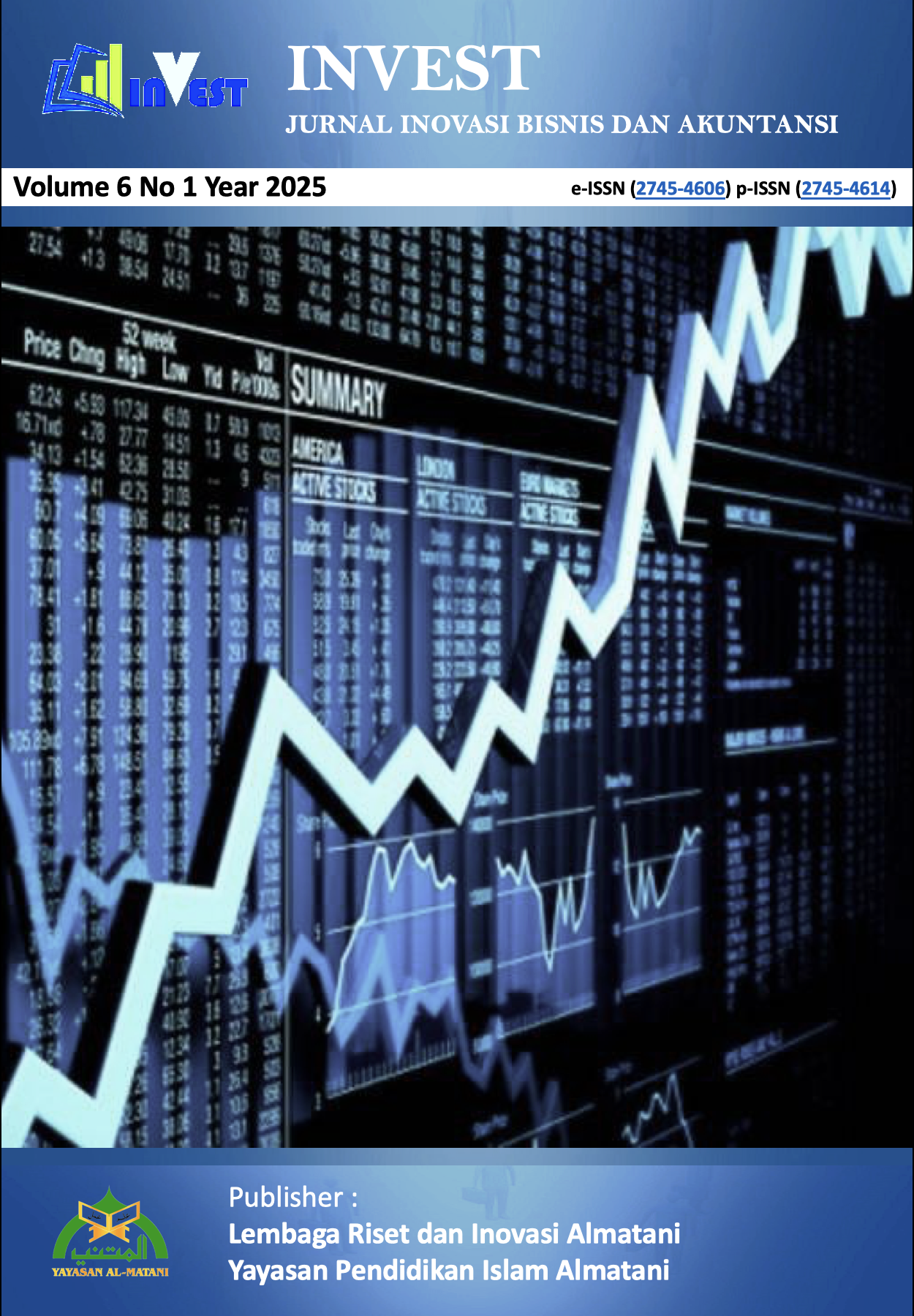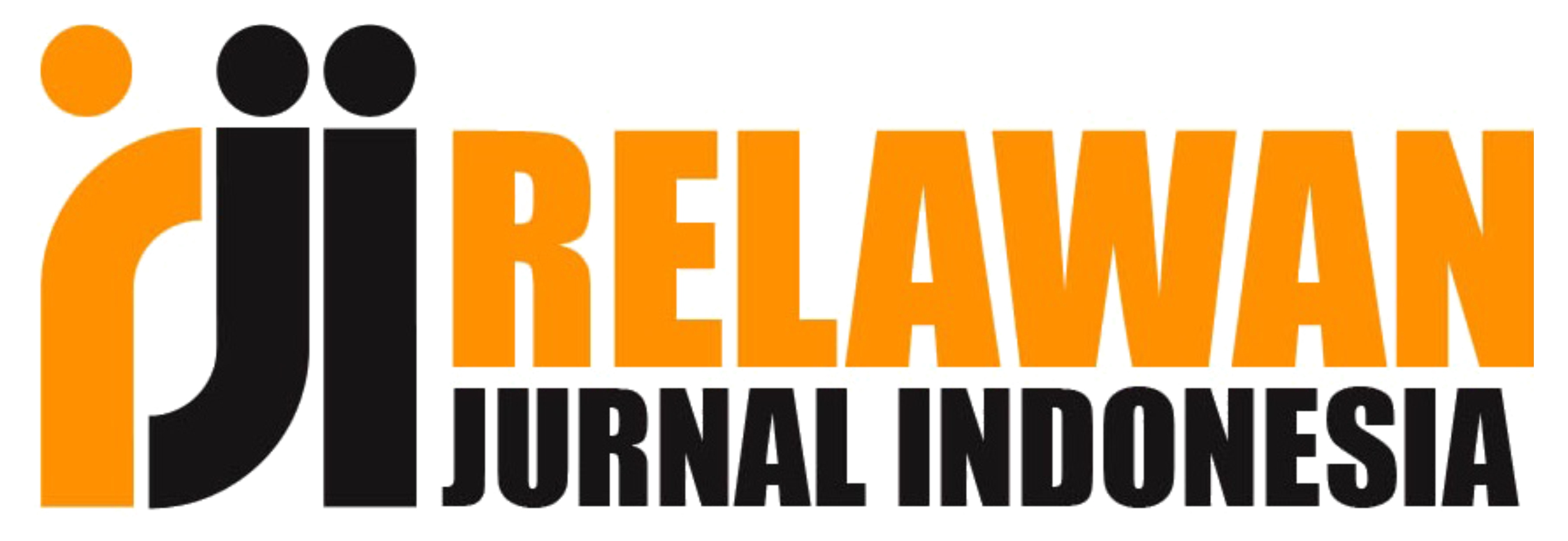Analysis of the Influence of the Tourism Industry Sector on Local Original Income in Karo Regency in 2018-2023
DOI:
https://doi.org/10.55583/invest.v6i1.1171Keywords:
Tourism, Local Own-Source Revenue, Regression Analysis, Karo Regency, Tourist Attractions, Number of TouristsAbstract
The purpose of this study is to examine how the number of visitors to Karo Regency and the number of tourist attractions impact Regional Original Income (PAD) in Karo Regency during the 2018–2023 period. The secondary data used in this study was obtained from the Central Statistics Agency (BPS) and the Karo Regency Tourism Office. To determine the influence of the independent variables on the dependent variable, both partially and simultaneously, descriptive analysis and multiple linear regression were employed. The results indicate that the number of tourist attractions and the number of tourists have a significant simultaneous effect on PAD, with a coefficient of determination (R²) of 0.85, meaning that these two variables account for 85% of the variation in PAD. The number of tourist attractions has a significant partial effect on PAD, whereas the number of tourists does not. In addition to providing theoretical insights into the relationship between tourism and PAD, this study offers practical benefits in the form of strategic recommendations for tourism management in Karo Regency. However, the study is limited to data collected within a specific period and does not include additional variables such as hotel occupancy rates or tourist spending. Future research is expected to incorporate more variables and a broader dataset to provide a more comprehensive understanding of the topic.
References
Arianto, M., Yunani, A., Widodo, A., Silvianita, A., & Rubiyanti, N. (2024). Kerangka konseptual: Penerapan teori antrian (M/M/1 with finite source) dalam meminimalisir demurrage (studi kasus pelayanan pemuatan klinker ekspor PT. QWE). Jurnal Manajemen Bisnis dan Inovasi, 10(2), 1459–1471.
Dewianawati, D., Efendi, M., & Revanji Oksaputri, S. (2022). Pengaruh kecerdasan emosional, kompetensi, komunikasi dan disiplin kerja terhadap kinerja karyawan. Jurnal Teknologi dan Manajemen Industri Terapan, 1(3), 223–230. https://doi.org/10.55826/tmit.v1iiii.47
Fadlan, A., Ramadhan, A., Utami, N. N., & Sri Cahyati. (2022). Faktor-faktor peningkatan wisatawan alam Batu Katak di Desa Batujongjong Kecamatan Bahorok Kabupaten Langkat. Seminar Nasional Teknologi dan Multidisiplin Ilmu (SEMNASTEKMU), 2(1), 83–90. https://doi.org/10.51903/semnastekmu.v2i1.157
Gurusinga, J. H., Sinaga, B., & Sinaga, A. S. R. (2020). Sistem pendukung keputusan menentukan prioritas tujuan wisata daerah pada Kabupaten Karo dengan metode TOPSIS. Jurnal Informatika Universitas Pamulang, 5(3), 423. https://doi.org/10.32493/informatika.v5i3.6656
Hadi Bangun, S., & Adianto, J. (2024). Analisis pengembangan wisata dengan konsep community-based tourism melalui persepsi masyarakat di Desa Semangat Gunung-Daulu, Kabupaten Karo. Nama Jurnal (Jika Ada), 6(2), 169–178. https://doi.org/10.37253/altasia.v6i2.9207
Hanafi, A. (2022). Pengaruh jumlah kunjungan wisatawan, objek wisata, dan retribusi pariwisata terhadap pendapatan asli daerah. Jurnal Sosial Ekonomi Bisnis, 2(1), 50–61. https://doi.org/10.55587/jseb.v2i1.34
Irrawati, M. D., & Mukaramah, M. (2024). Implementasi metode regresi linear berganda untuk mengatasi pelanggaran asumsi klasik. Studi Akuntansi, Keuangan, dan Manajemen, 3(2), 83–94. https://doi.org/10.35912/sakman.v3i2.2743
Lusiana, F. O., Fatma, I., & Windarto, A. P. (2021). Estimasi laju pertumbuhan penduduk menggunakan metode regresi linier berganda pada BPS Simalungun. Journal of Informatics Management and Information Technology, 1(2), 79–84. https://doi.org/10.47065/jimat.v1i2.104
Millah, A. S., Apriyani, Arobiah, D., Febriani, E. S., & Ramdhani, E. (2023). Analisis data dalam penelitian tindakan kelas. Jurnal Kreativitas Mahasiswa, 1(2), 140–153.
Muthahharah, I., & Inayanti Fatwa. (2022). Analisis regresi linear berganda untuk media pembelajaran daring terhadap prestasi belajar mahasiswa di STKIP Pembangunan. Jurnal MSA (Matematika dan Statistika serta Aplikasinya), 10(1), 53–60. https://doi.org/10.24252/msa.v10i1.25145
Ompusunggu, V. M., Sitorus, R. A., & Siagian, C. (2023). Pengaruh atribut produk wisata dan electronic word-of-mouth (e-WoM) terhadap keputusan berkunjung pada kawasan wisata di Kabupaten Karo. Jurnal Regionomic, 5(1), 64–77.
Pratiwi, W. N. G., & Wahyono. (2023). Pengaruh pandemi COVID-19 terhadap kinerja keuangan pada perusahaan sub-sektor industri makanan dan minuman yang terdaftar di Bursa Efek Indonesia tahun 2018-2021. JIMPS: Jurnal Ilmiah Mahasiswa Pendidikan Sejarah, 8(3), 1423–1437. https://jim.usk.ac.id/sejarah
Riyanto, A., & Arini, D. P. (2021). Analisis deskriptif quarter-life crisis pada lulusan perguruan tinggi Universitas Katolik Musi Charitas. Jurnal Psikologi Malahayati, 3(1), 12–19. https://doi.org/10.33024/jpm.v3i1.3316
Rizky, F. A., & Ayu, P. (2023). Literature review analisis data kualitatif: Tahap pengumpulan data. Mitita Jurnal Penelitian, 1(3), 34–46.
Sembiring, R., & Nurafni, A. (2024). Pengaruh anggaran belanja daerah terhadap belanja modal di Provinsi Sumatera Utara. Jurnal Ilmiah Ekonomi dan Manajemen, 2(8), 909–922.
Sintia, I., Pasarella, M. D., & Nohe, D. A. (2022). Perbandingan tingkat konsistensi uji distribusi normalitas pada kasus tingkat pengangguran di Jawa. Prosiding Seminar Nasional Matematika, Statistika, dan Aplikasinya, 2(2), 322–333.
Sukresna, I. N. A., & Ismiwati, B. (2024). Nexus Between Tourism Sector and Regional Original Revenue: Empirical Evidence from West Nusa Tenggara, Indonesia. Journal of Enterprise and Development (JED), 6(3). https://doi.org/10.20414/jed.v6i3.11870
Susianto, B., Johannes, J., & Yacob, S. (2022). Pengaruh daya tarik wisata dan amenitas terhadap keputusan berkunjung wisatawan pada desa wisata Kabupaten Kerinci. Jurnal Ilmu Manajemen Terapan, 3(6), 592–605.
Tarigan, A. J. P., & Suhaimi, S. (2025). The Influence of The Tourism Economic Sector in Increasing Original Income of The Karo District. TALENTA Conference Series: Local Wisdom, Social, and Arts, 8(2). https://doi.org/10.32734/lwsa.v8i1.2367
Yaldi, E., Pasaribu, J. P. K., Suratno, E., Kadar, M., Gunardi, G., Naibaho, R., Hati, S. K., & Aryati, V. A. (2022). Penerapan uji multikolinieritas dalam penelitian manajemen sumber daya manusia. Jurnal Ilmiah Manajemen dan Kewirausahaan (JUMANAGE), 1(2), 94–102. https://doi.org/10.33998/jumanage.2022.1.2.89
Downloads
Published
How to Cite
Issue
Section
License
Copyright (c) 2025 Nadila Huswatun Hasanah, Ahmad Fadlan, Rahmad Sembiring

This work is licensed under a Creative Commons Attribution-NonCommercial 4.0 International License.










